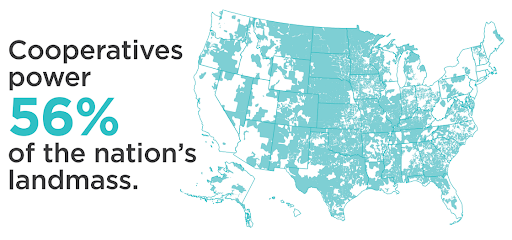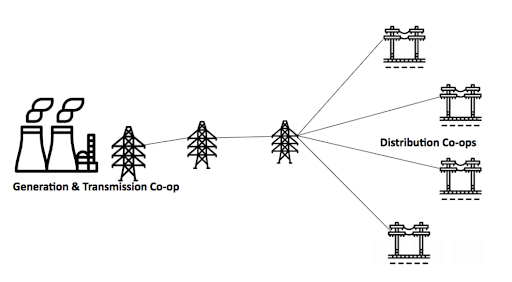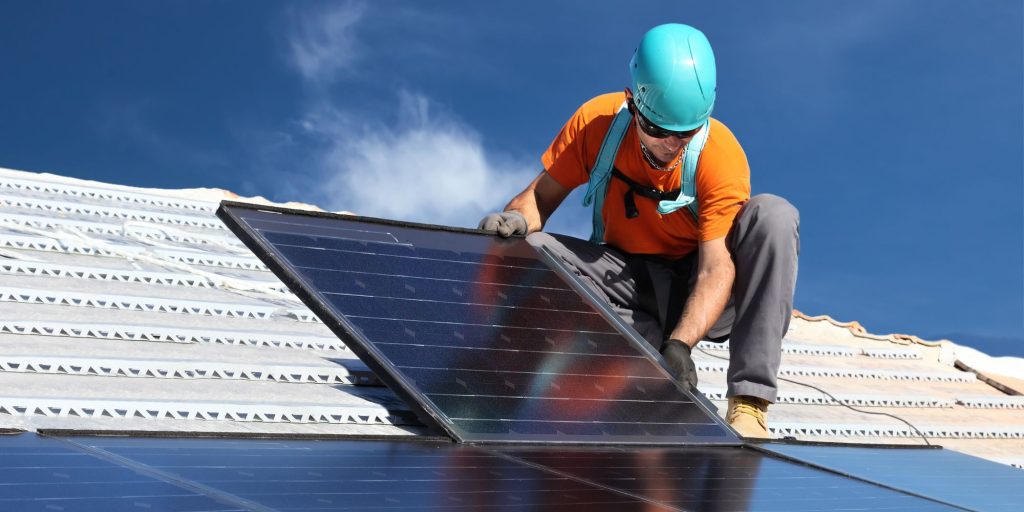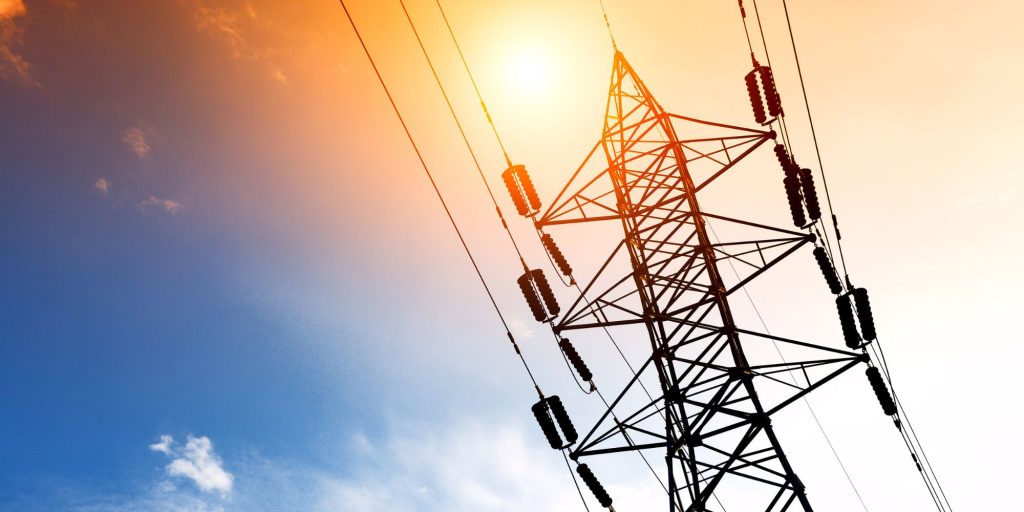42 million Americans are members of rural electric co-ops, offering a powerful (and democratic) opportunity to shift the US electricity grid to renewables and harness funding for energy efficiency.
Often, rural communities are left out of decisions that influence their daily lives, including whether climate-damaging policies are implemented. As co-owners of their rural electric cooperatives (RECs), rural residents can take advantage of the organizations’ democratic structures to make real change in how their homes and businesses are powered.
What’s a Rural Electric Co-op?
Rural electric cooperatives (RECs) started in the 1930s as a New Deal program to electrify communities in the rural US. The Rural Electrification Act, signed by President Roosevelt, was a resounding success: by 1960, 97% of rural homes had electricity. Today, there are nearly 900 RECs serving 42 million people and 56% of the land in the United States. Additionally, RECs serve more than 90% of counties with persistent poverty, making them vitally important as we navigate environmental justice and a cleaner energy future.

What makes a rural electric cooperative different from an electric utility?
Electric cooperatives are different from electric utilities. Utilities are owned by investors and their focus is to maximize profit for their shareholders. These investors are the only people who have a say in how the commercial utility is run. An electric cooperative, on the other hand, is a not-for-profit organization owned and democratically controlled by its members (i.e. the people who purchase power from the cooperative). The end users an electric co-op serves are actually the owners of the organization and get to decide how it’s run.
Keep up to date with grassroots organizing in the West with WORC’s newsletter.
How do rural electric cooperatives work?
The electric coop that provides you electricity likely gets its power from a larger, regional cooperative called a Generation and Transmission (G&T) co-op. As the name suggests, these G&Ts generate electricity and transmit it to the smaller, local distribution co-ops, who then deliver electricity to your home or business.

All RECs operate under seven guiding principles:
- Open and Voluntary Membership: any person in the cooperatives service area can choose to become a member-owner and pay to use the services of the coop.
- Democratic Member Control: members participate in setting policies and making decisions. Members have equal voting rights to select representatives (usually a board of directors) and weigh in on certain issues.
- Members’ Economic Participation: Members contribute equitably to the capital of their cooperative and get to decide how economic surpluses are used.
- Autonomy and Independence: Cooperatives are autonomous, self-help organizations controlled by their members.
- Education, Training, and Information: Coops provide training for members, elected representatives, and employees to help them effectively run their cooperatives. Communications about the nature and benefits of cooperatives, particularly with the general public and opinion leaders, help boost cooperative understanding.
- Cooperation Among Cooperatives: By working together through local, national, regional and international structures, cooperatives improve services, bolster local economies, and deal more effectively with social and community needs.
- Concern for Community: Cooperatives work for the sustainable development of their communities through policies supported by the membership.
Why should you care about your electric co-op?
Given the cooperative structure of a REC, there is democratic oversight to how the organization is run. That means you can raise your concerns with staff, at board meetings, and elect board representatives to address your priorities. As an example, RECs lag behind in clean energy adoption (co-ops still get 78% of their power from non-renewable sources), however, several cooperatives have made huge strides in shifting their reliance on fossil fuels while maintaining or lowering rates, thanks to campaigns led by member-owners focusing on local control and generation.
Some cooperatives do more than provide electricity. RECs are ideally placed to deliver high-speed internet to rural communities at lower prices than commercial fiber providers. Other RECs have programs that help you upgrade the efficiency of your home, decreasing your monthly energy bill. These Pay As You Save programs are a win-win for the cooperative and its members.
While co-ops have the capacity to deliver more affordable and cleaner renewable energy or offer incentives to help upgrade your home, they often need input from their members to do so. Several WORC member groups are working with co-op members or the co-ops themselves to ensure that they improve members’ lives and reduce their energy bills.
Learn more:
How to Have an Impact on Your Rural Electric Co-op
The Battle for Clean Energy in Colorado Falls on Rural Power Co-Ops
Rural Grassroots Organizations Call for Sweeping Rural Electric Cooperative Reforms in 2021

Yes, I want to help WORC elevate Western voices and hold decision-makers accountable!

